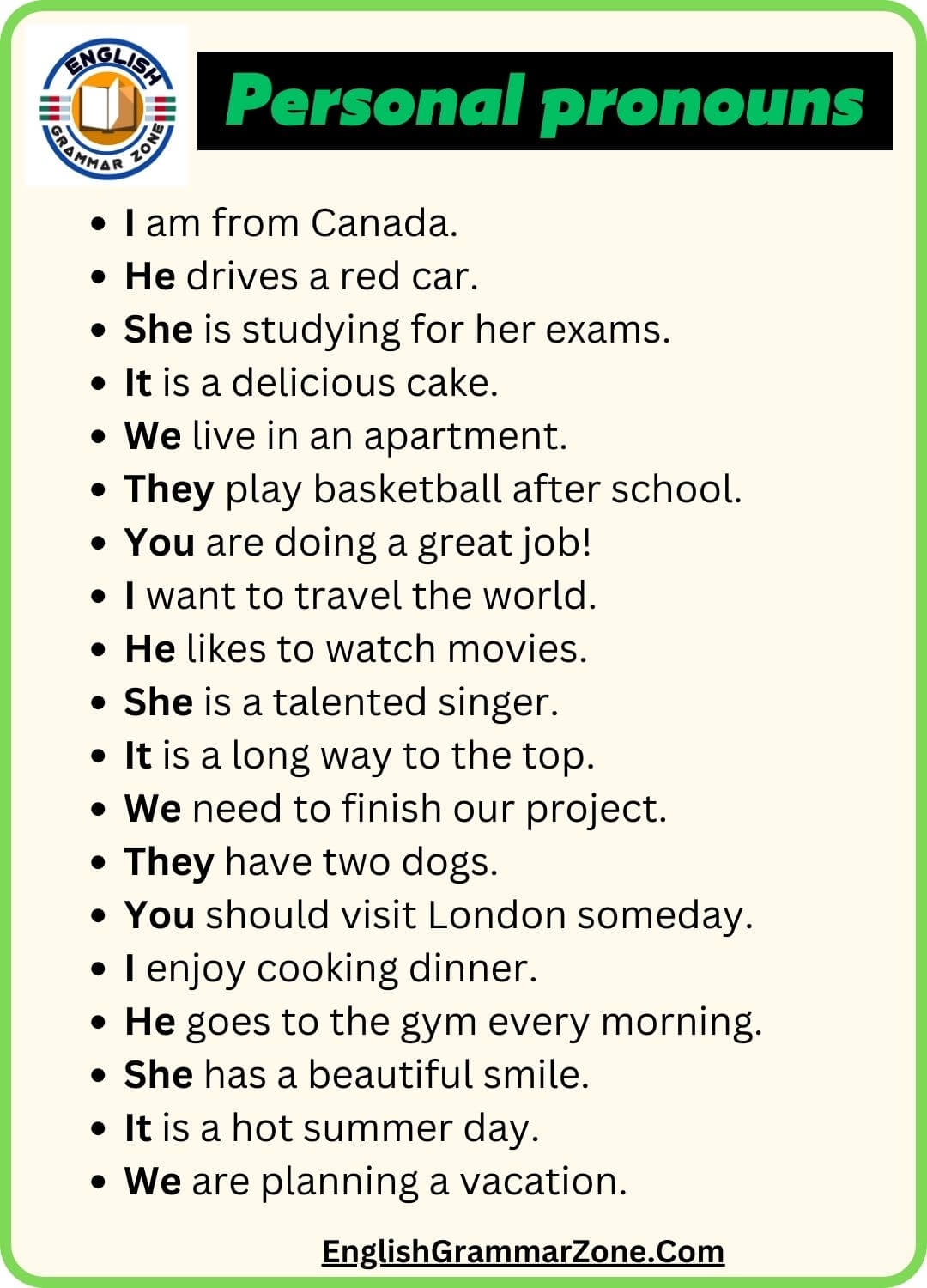Personal pronouns are words used to replace nouns in a sentence to avoid repetition. They can refer to the person speaking (first person), the person being spoken to (second person), or the person or thing being spoken about (third person). Here are some examples of personal pronouns:
1. First person singular: I, me, my, mine
2. First person plural: we, us, our, ours
3. Second person singular: you, your, yours
4. Second person plural: you, your, yours
5. Third person singular: he, she, it, him, her, his, hers, its
6. Third person plural: they, them, their, theirs
Personal pronouns play a crucial role in communication as they help make sentences more concise and less repetitive. Here are some examples of how personal pronouns are used in sentences:
1. First person singular:
– I am going to the store.
– This book is mine.
– My cat is black.
2. First person plural:
– We are going to the movies tonight.
– This project is ours to complete.
– Our house is on the corner.
3. Second person singular:
– You are my best friend.
– Is this your car?
– Your hair looks great.
4. Second person plural:
– You all are invited to the party.
– Is this your book?
– Your shoes are untied.
5. Third person singular:
– He is coming to the meeting.
– She brought her dog to the park.
– It is raining outside.
6. Third person plural:
– They are going on vacation.
– I saw them at the store.
– Their car broke down.
In conclusion, personal pronouns are an essential part of language and help to make communication more efficient. By using personal pronouns, we can avoid repeating nouns and make our sentences clearer and more concise. Understanding and using personal pronouns correctly is key to effective communication.
